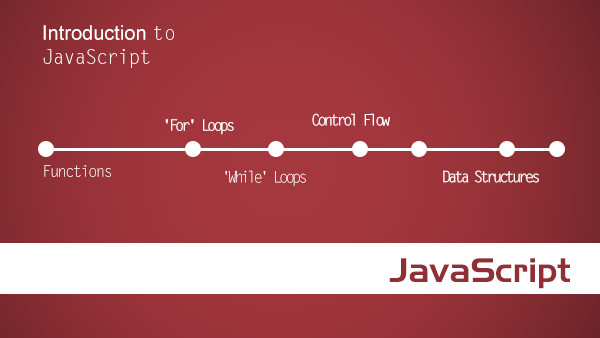稀疏数组真心话大冒险
文章地址:陈泽辉---原文地址
概念
稀疏数组(sparse array)
稀疏数组与密集数组最大的不同,就是稀疏数组中可以有“孔”(hole)。 绝大多数 JavaScript 中的稀疏数组默认是都带孔的。(ES标准并没有这样规定)
孔(hole)
孔是逻辑上存在于数组中,但物理上不存在与内存中的那些数组项。在那些仅有少部分项被使用的数组中,孔可以大大减少内存空间的浪费。 孔更像是 undefined ,但并非真正的没有被定义,仅仅是数组中的孔没有被赋值。
简单实现(大冒险)
new Array(1) // hole × 1 [ , ] // hole × 1 [ 1, ] // int(1), no holes, length: 1 [ 1, , ] // int(1) and hole × 1 复制代码
上例中可以看出,数组逗号分隔符后边的元素完全被忽略了。
再看看容易混淆的情况:
const a = [ undefined, , ]; console.log(a[0]) // undefined console.log(a[1]) // undefined 复制代码
以上数组的值都为 undefined ,但是又并非都为 undefined。可以看出,a[0] 的值是undefined,a[1] 是一个孔。
我们用 prop in object 验证一下
const a = [ undefined, , ]; console.log(0 in a) // true console.log(1 in a) // false 复制代码
这样看起来是不是很明朗了?但是真正的孔为 undefined 的真相是什么,我们继续。 使用原型链prototype 进行一次赋值,来看看情况:
// elsewhere in boobooland Array.prototype[1] = 'fool!' // and in my code const a = [ undefined, , ]; console.log(0 in a) // true console.log(1 in a) // true … 复制代码
那问题来了,如果原型链被污染了,这种方式验证孔的存在就显得不严谨了。当然使用 proper 的方式可以避免这种情况:
// elsewhere in boobooland Array.prototype[1] = 'fool!' // and in my code const a = [ undefined, , ]; console.log(a.hasOwnProperty(1)) // false // have some of that boobooland 复制代码
自从 hasOwnProperty 在 ES3 提出后,使用这个方法,我们可以称自己是一个 古典编程者。
为什么(真心话)
性能可以作为阐述孔的存在的原因,比如创建一个数组 new Array(10000000),这里并没有 1 千万的值被分配在数组中,浏览器也不会存储任何数据。
在遍历中终止
我们验证一下在 map,forEach 和 filter 这3种遍历模式下的回调情况。
forEach 将跳过所有的孔,也会耗时。
const a = new Array(100) a[1] = 1 let i = 0 a.forEach(() => i++) console.log(i) // 1 - the callback is never called 复制代码
map 和 forEach 一样,跳过所有孔,但是也会在结果中 return 对应的孔。
const a = [ undefined, , true ]; const res = a.map(v => typeof v); console.log(res) // [ "undefined", hole × 1, "boolean" ] 复制代码
当然,全是孔的数组使用 map return 固定值,也不好使,仍然会 return 一个孔,对应的回调函数并不执行。
new Array(10).map((_, i) => i + 1) // hole × 10 // not 1, 2, 3 … etc 复制代码
然后,filter 会移除对应的孔。
const a = [ undefined, , true ]; const res = a.filter(() => true); console.log(res) // [ undefined, true ] - no hole ? 复制代码
在循环中进行
有两种循环可以遨游稀疏数组,第一种是经典的循环,for,当然,while 和 do/while一样起作用。
const a = new Array(3); for (let i = 0; i < a.length; i++) { console.log(i, a[i]) // logs 0…2 + undefined } 复制代码另外,ES6 的数组方法,会将数组的孔转换为 undefined,这是因为在底层,数组展开使用了iterator 协议。
这意味着在如果要拷贝数组的时候,需要谨慎使用 ... 扩展运算,而使用 slice 方法拷贝。
const a = [ 1, , ]; const b = [ ...a ]; const c = a.slice(); expect(a).toEqual(b); // false expect(a).toEqual(c); // true 复制代码
适用于稀疏数组的情况
对比一下 Array.from({ length }) 的情况,可以看出耗时差距。
const length = 1000000; // 1 million ? let time = new Date().getTime() new Array(length); // ~5ms console.log(new Date().getTime() - time) time = new Date().getTime() Array.from({ length }) // ~150ms console.log(new Date().getTime() - time) 复制代码总结
分隔符尾部元素会被忽略
[ 1, 2, 3, ] // no hole at the end, just a regular trailing comma 复制代码
分隔符中间为孔
[ 1, , 2 ] // hole at index(1) aka empty 复制代码
检测孔使用
array.hasOwnProperty(index)
[ 1, , 2 ].hasOwnProperty(1) // false: index(1) does not exist, thus a hole 复制代码
遍历方法,如
map,forEach,every不会回调孔
const a = new Array(1000); let ctr = 0; a.forEach(() => ctr++); console.log(ctr); // 0 - the callback was never called 复制代码
map返回的新数组会包含对应的孔
[ 1, , 2 ].map(x => x * x) // [ 1, <empty>, 4 ] 复制代码
filter返回的数组会移除孔
[ 1, , 2 ].filter(x => true) // [ 1, 2 ] 复制代码
keys和values返回的循环方法会遍历到孔,包含但不限于for key of array.keys())
const a = [ 'a', , 'b' ]; for (let [index, value] of a.entries()) { console.log(index, value); } /* logs: - 0 'a' - 1 undefined - 2 'b' */ 复制代码数组展开运算
[...array]会转换孔为undefined,这当然会增加内存消耗,影响性能
[...[ 'a', , 'b' ]] // ['a', undefined, 'b'] 复制代码
庞大的数据创建非常迅速,比
Array.from快多了
const length = 10000000; // 10 million new Array(length); // quick Array.from({ length }) // less quick
 随时随地看视频
随时随地看视频




